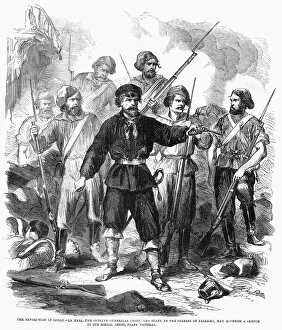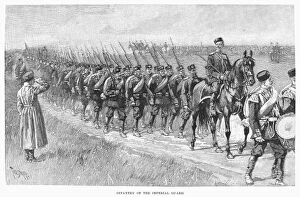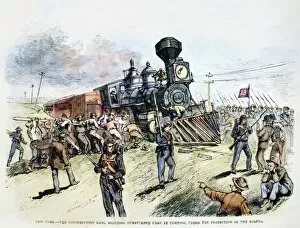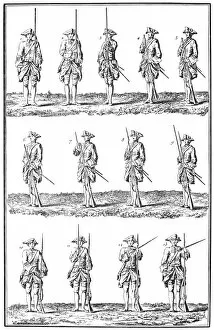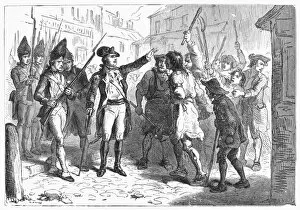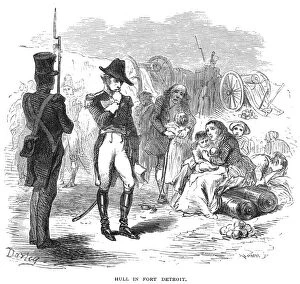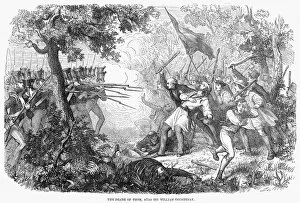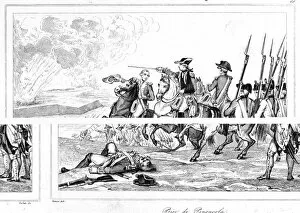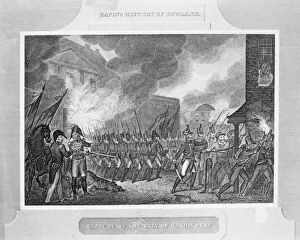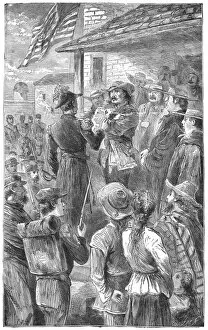"Bayonet: A Weapon of History and Valor" This captivating poster for the Welsh Guards transports us back to a pivotal moment in history - the Battle of Brandywine during the Revolutionary War. Painted by Howard Pyle in 1906, it showcases the bravery and determination of those who fought for their nation's freedom. The bayonet, an integral part of warfare throughout centuries, played a crucial role during the Napoleonic Wars. French soldiers donned their distinctive uniforms as they wielded this formidable weapon on battlefields across Europe. Even during times of celebration, such as Christmas and New Year, the Coldstream Guards proudly displayed their bayonets on cards sent to loved ones. Their commitment to duty never wavered. In between conflicts, when peace seemed within reach, posters like that from the Territorial Army reminded citizens of their responsibility to protect their homeland. The bayonet symbolized readiness and preparedness against any threat that might arise. Artistic depictions like James Gillray's "A March to the Bank" captured both humor and satire while showcasing soldiers armed with bayonets. These images served as reminders that even in times of peace or political turmoil, military strength was always at hand. The Napoleonic Wars witnessed countless battles where brave soldiers faced each other with fixed bayonets. One such engagement was immortalized in "BATTLE OF THE ROTHIERE (1814), " reminding us of both triumphs and sacrifices made by those who carried these lethal weapons into combat. During World War I's infamous Battle of Somme, Coldstreamers charged fearlessly towards enemy lines with bayonets gleaming under fire-filled skies. Their unwavering courage became synonymous with heroism amidst unimaginable horrors. George Orwell's book cover for "Homage to Catalonia, " published in 1938 about the Spanish Civil War evokes emotions tied closely with sacrifice and loyalty embodied by those who fought with bayonets in hand.










